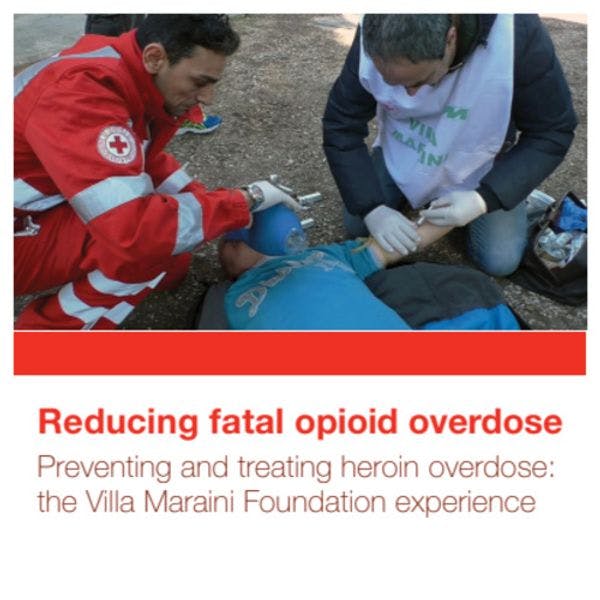Prévenir et traiter les surdoses à l’héroïne : l'expérience de la Fondation Villa Maraini
La Croix-Rouge et le Croissant-Rouge recommandent de déployer des stratégies de prévention des surdoses qui renforcent les capacités des communautés et élargissent l’accès à la naloxone. Pour en savoir plus, en anglais, veuillez lire les informations ci-dessous.
By the Red Cross and Red Crescent Partnership on Substance Abuse
The opioid overdose epidemic has become one of the greatest threats to public health all around the world. Globally, UNODC estimates that of more than 207,000 annual drug-related deaths worldwide, most of those are caused by overdosea. A recent official report of the US National Institute on Drug Abuse estimated 64,000 overdose deaths in the United States alone during 2016.
The most recent WHO guidelines aim to reduce the number of opioid-related deaths globally. The guidelines recommend that countries expand naloxone access for persons likely to witness an overdose in their community, such as friends, family members and partners of people who use drugs, along with social workers. In most countries, naloxone is currently accessible only through hospitals and ambulance crews, who may not manage to provide help to people who need it fast enough. Naloxone has been used in the management of opioid overdose for more than 40 years. It is a safe drug with a low risk of serious side effects. According to the guidelines, any adult capable of learning basic life support can also learn to recognize an opioid overdose and administer naloxone in time to save lives.
The International Red Cross and Red Crescent Movement, in line with its strategy objectives ‘saving lives, changing minds’ should contribute to the development and implementation of a variety of strategies to reduce fatal overdoses and save lives through prevention, treatment and harm reduction strategies, as already recommended by the Group of Experts on Drug Abuse of Red Cross Red Crescent in 1980.
Through community-based action, capacity building for addressing health challenges in acute or chronic humanitarian situations and resilience building of affected communities and people, the International Red Cross and Red Crescent Movement has significant experience in community mobilization, access to health and social services and protection for people left behind. This experience has contributed significantly in many countries to address the problems of drug users in communities by improving harm reduction services. To strengthen drug abuse prevention and response, several health workforce initiatives have been launched aiming to create or mobilize multi-task community health workers (CHW), integrated in the systems for health strengthening, and to ensure community engagement and task shifting between the CHWs and other health cadres. The Red Cross Red Crescent Movement is an important partner in massively scaling up response to the problem, specifically to prevent and treat overdose – harnessing the skills and experiences of the volunteers in the National Red Cross or Red Crescent Societies.
Many strategies are focused on primary prevention and increased access to effective treatment, although the past decade has seen an exponential increase in harm reduction initiatives. In many countries, the policy changes are designed to increase assistance during a witnessed overdose, while in other countries there are still many legal and cultural barriers to implement a humanitarian approach to this phenomenon. Increased public and political awareness of this issue have facilitated widespread implementation of several initiatives, including improved distribution of naloxone, based on effective and evidencebased activities, as recorded in the accompanying document regarding the direct experience of the Italian Red Cross Villa Maraini Foundation, the Hub of the IFRC international Partnership on Substance Abuse.
